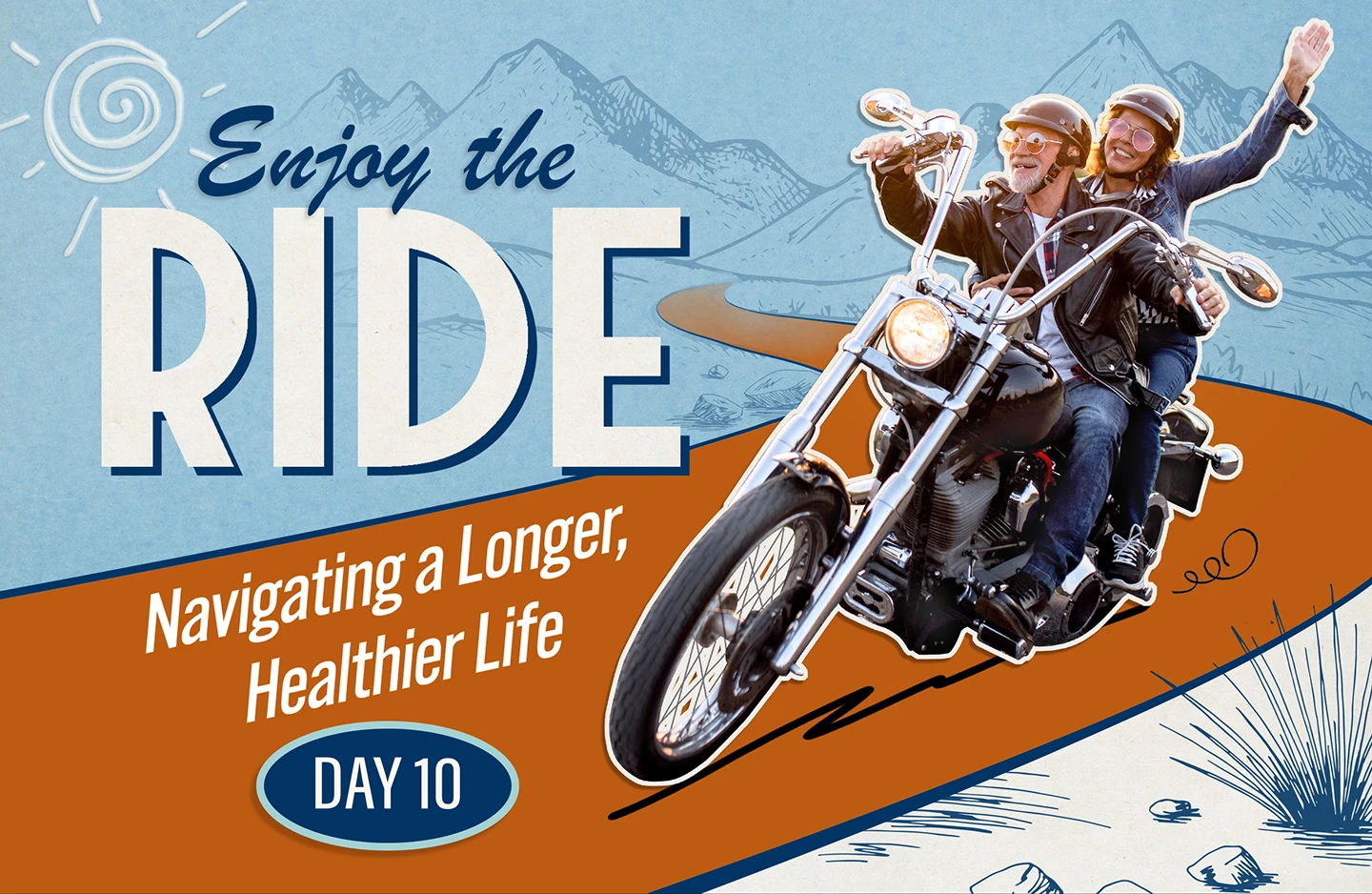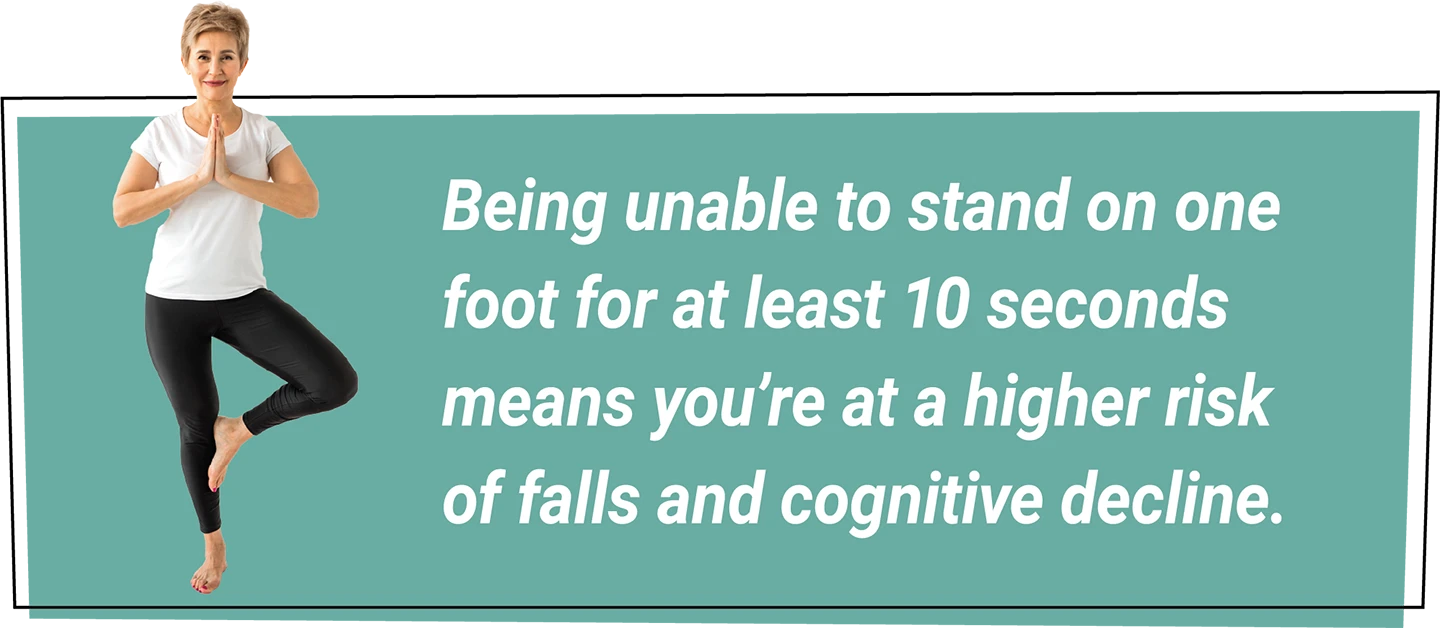
Day 10: Steadying Your Steering Hands
The last leg of a road trip is often exciting because it means you’re close to the destination you’ve been dreaming of. Maybe you’re even drumming the wheel in anticipation or longing to stretch your legs the moment that vacation spot is in sight.
We don’t blame you! You’ve passed so many important mile markers and taken good care of the vehicle that got you there. But can you say the same about your body, especially when it comes to your balance or your grip on the wheel?
Yesterday, we discussed maintaining your musculoskeletal health to keep your frame strong, but your balance is just as vital—and not only to avoid falls. The problem is that our balance gets thrown off track as we age. At 50, many people can balance on one foot for 40 seconds, but that time goes down to as little as 10 seconds by the time we’re 80.
Maybe that doesn’t seem like a big deal, but studies show that the inability to stand on one foot for at least 10 seconds doesn’t bode well for your longevity journey. It means you’re at a higher risk of falls and cognitive decline, in addition to being 50% to 84% more likely to die from any cause over the next decade.
Further findings indicate that poor balance is linked to obesity, high blood pressure and Type 2 diabetes. Chronic conditions like these, as well as cancer, inner ear problems, arthritis, weak muscles and certain medications, also have a negative impact on balance. It can be a vicious cycle that’s hard to navigate.

There are similar longevity predictors associated with grip strength, which involves not only the hand on the wheel, but also your wrists and forearms. While that may sound strange, grip is a good predictor of your body’s overall strength, the likelihood of developing chronic disease and fall risk.
Lower grip strength (which is measured by a device called a hand dynamometer) raises risks of chronic obstructive pulmonary disease, diabetes, heart disease, mental health conditions, obesity, sleep problems and frailty.
The good news is that there’s still time to throw it in reverse. Not only can strengthening balance and grip help you avoid falls, which are the leading cause of injury and death among people 65 and older, but they also can improve your brain.
A study in BMC Geriatrics found that adults without falling episodes had a grip up to 69% stronger than their peers. People who practice balancing on one foot regularly also exhibit better attention, memory and spatial orientation, especially when multitasking. For example, they’re able to stand on one foot while brushing their teeth.
Superagers also get at least seven hours of high-quality sleep per night, engage in strenuous physical activity such as gardening and climbing stairs, eat a healthy diet and protect their brains. That not only means a diet rich in lean protein and anti-inflammatory foods, but also engaging in the cognitive and social behaviors we covered on Day 2 and Day 3 of this email series.
So, aside from these options, and being proactive about healthcare visits, how can you achieve a better balance and grip? We have the pit stops for you!

Every day during the series, we'll share a few tips for a healthier journey. Whether you've drifted off track, need a tune-up or want to stay on course, we can help.

Getting Back on the Road
Like your tires, you may need some balancing. No problem! You can start by standing on one leg for short durations and work your way up. Just remember you should stand by a table or chair at first in case you need a little support. It may also help your grip if you squeeze a stress ball, but maybe not while in traffic. You need both hands on the wheel!

Tune-Up
If standing on one foot doesn’t cause any detours for you, try upping your skills by practicing yoga, taking a dance class or playing pickleball to challenge your balance and coordination. It may also help to clear the congestion in high-traffic areas of your home. Some things that can increase fall risks are poor lighting, cables or wires, loose rugs, clutter and even our favorite road trip passengers—our pets.

Cruise Control
Maybe your tree pose skills are unrivaled, but you also can try different types of grip strength tests, including crush grip (closing your hand as tightly as you can), support grip (holding onto an object for an extended time) and pinch grip (holding an object between the thumb and index finger). Ways to enhance all three types of grip include performing plate pinches, deadlifts, pull-ups and kettlebell exercises like we’ve talked about in previous issues of Live Healthy!


